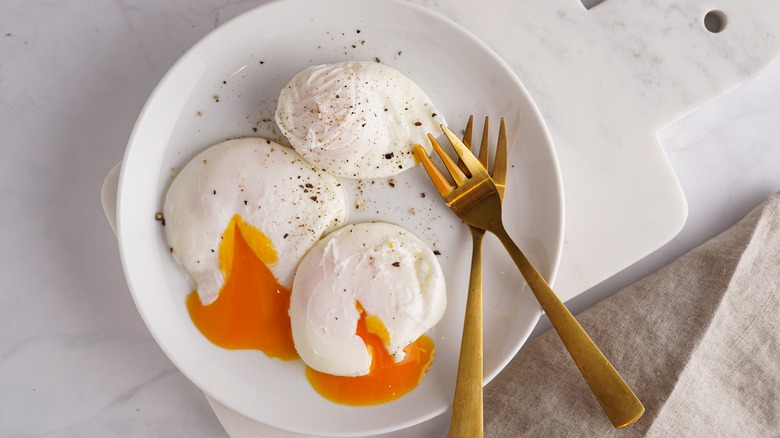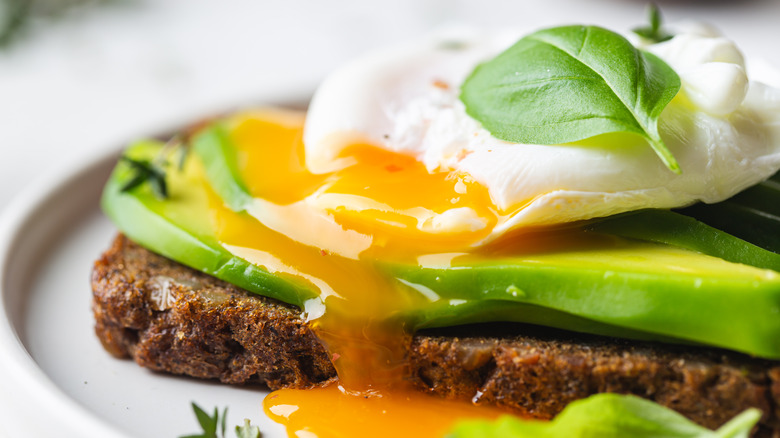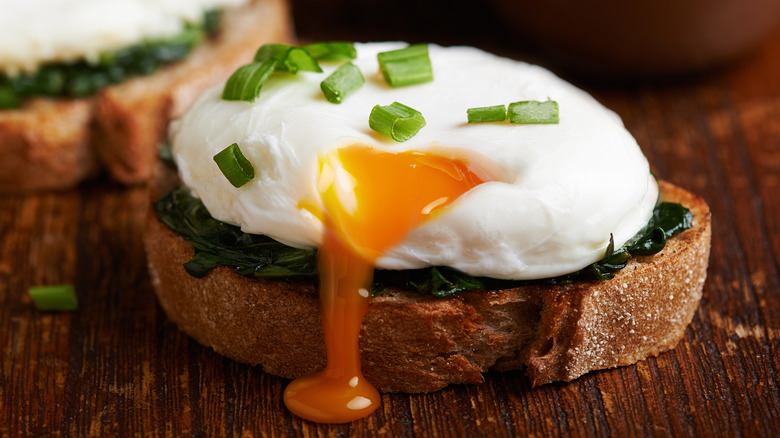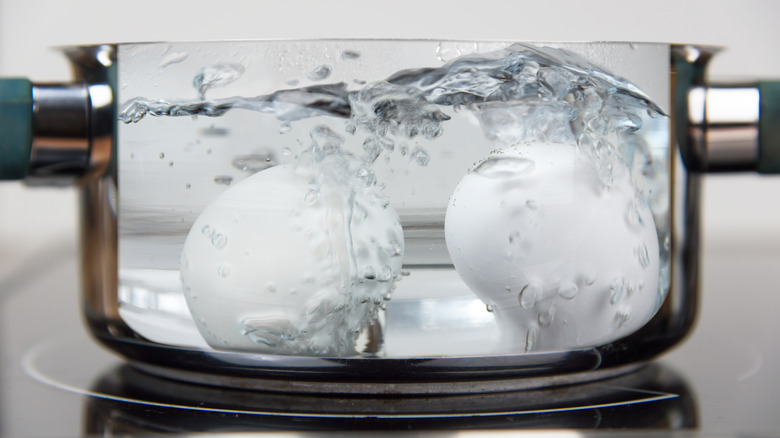Why You Should Stop Poaching Eggs In Boiling Water
When it comes to making eggs, you have many styles to choose from — scrambled, over-easy, or even baked — but a properly poached egg is a true delight. It features a firm, but pillowy egg white that, when cut open, reveals a runny center of egg yolk. It's the perfect topping to let ooze out over a piece of avocado toast, add a little heft and protein to your rice bowl, or turn a bowl of cheesy grits into a complete meal.
Poached eggs are considered one of the most difficult egg preparations to make at home, according to Sauder's Eggs, because the finicky dish requires perfect timing and a few special techniques to produce that firm white outside with a runny yolk.
Thomas Keller shared his go-to egg poaching method with MasterClass, explaining that, to prepare the dish, you need to submerge eggs that you've first cracked in small dishes or ramekins (to avoid eggshells or broken yolks) into a pot of hot — but not totally boiling — water.
Boiling water can ruin your poached eggs
Chef Keller explains for MasterClass instead of a true boil you'll want to opt for a "rolling simmer" when poaching eggs, which will ensure that the eggs cook properly, but don't cook too fast. If your water is at a boiling temperature when you add eggs in, it could cause the egg white to break apart, the Kitchn notes. Instead of a beautifully poached egg, you'd be left with just "wispy bits" of egg white strewn throughout your pot. On the opposite end of the spectrum, if you don't bring your water up to a simmer before you drop the eggs in, the outlet reports the egg white and yolk may separate.
So how can you tell if your water is simmering? According to Cooks Illustrated, small bubbles should appear on the surface of the water. If you see rolling bubbles that continually break the surface, you've gone too far.
Check your water levels
Now that you know the importance of simmering — not boiling — water when poaching eggs, there are a few other cooking techniques you can follow to ensure your eggs stay together and you end up with that pillowy texture perfect for topping your next eggs benedict. When it comes to your water, not only does it need to be the right temperature, but you should check that you're adding the correct amount of water to the pot in the first place. Huffington Post shares that around three inches should suffice, as you want your eggs to have enough room and be fully covered.
The size of your pan itself makes a difference, too, explains the Kitchn. For the same reason you want to be sure you're using enough water in your pan, you want your eggs to be able to move around a little bit in the pot as they are poached to ensure they cook evenly. While you don't need to reach for your largest pot to poach eggs, a small one probably won't work either as the eggs will end up crowded together. A medium-sized saucepan or a straight-sided skillet should do the trick, provided you can fit three inches of water in there without it boiling over.
You should also consider how many eggs you are adding to the pot at once. Even with the perfect pot and a gently simmering, properly measured amount of water, too many eggs will lead to an overcrowding problem. Think of your eggs as introverts; They'd prefer to have their personal space in the pot as opposed to touching their peers.
Spin 'em around
Poached eggs are known for their ... well, egg-like shape. However, without special care when cooking, your poached eggs can easily spread out in the pot instead of forming into a perfect oval.
A common mistake people make when poaching eggs is not taking them for a spin, Huffington Post says. To properly poach an egg, you can't simply add them to the (almost) boiling water. For a better chance at perfect results, you need to introduce a whirlpool into the equation to ensure the egg whites stay together during the poaching process.
According to Thomas Keller, the best way to introduce this "vortex" is by using a spoon to forcefully spin the water at the edge of the pot until a whirlpool forms (via MasterClass). When adding eggs to the pot, they should be gently dropped one at a time into the center of the swirl — that way the eggs will form into their characteristic shape. The vortex will need to be reanimated each time a new egg is added to the pot, and you'll want to make sure to cook no more than three at a time to avoid that overcrowding issue we mentioned above.



